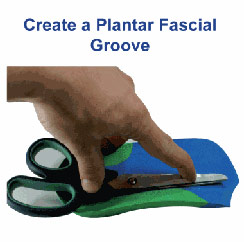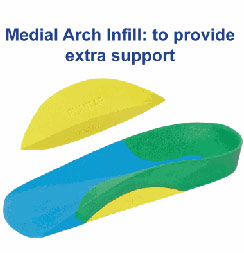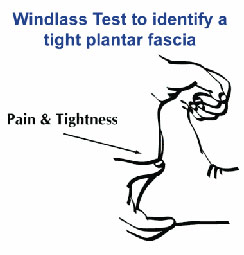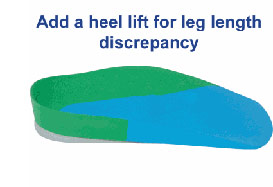| A common complaint amongst patient’s who have been prescribed foot orthotics is ‘pain in the arch’. This type of pain can be the result of 4 common issues: 1. Pain can be due calcification (similar to dupuytren’s contracture) or a fibroma in the body of the Plantar Fascia, or a Ganglion cyst may be present. TREATMENT: If there is calcification in the fascia, use manual therapy to break it down.
VIEW VIDEO: 2. Plantar fasciitis pain can be experienced at the attachment to the calcaneus. TREATMENT: Control rearfoot pronation using orthotics with intrinsic rearfoot posting to realign the feet to the Subtalar Joint Neutral Position (STJN). If additional inversion is required to control and achieve STJN, add extra rearfoot wedges (2° or 4°) to provide additional Calcaneal control2. A medial arch infill can also be applied to the orthotic to provide increased arch support. The Plantar fascia may be tight, and during gait (at mid stance to toe-off), compressing into the medial longitudinal arch of the orthotic causing discomfort and pain. To test for a tight fascia use the ‘Windlass Test’ (pictured below).
VIEW DEMO
TREATMENT: Create a plantar fascial ‘relief’ or ‘groove’ in the arch of the orthotic using heat or by grinding the orthotic. Place the groove 1cm from the medial edge through the arch contour. 4. The patient may exhibit unilateral excessive pronation as a possible compensation or due to plantar injury.
TREATMENT: Create a plantar fascial ‘relief’ or ‘groove’ in the arch of the orthotic using heat or by grinding the orthotic. Place the groove 1cm from the medial edge through the arch contour
Unilateral arch pain can be associated with a leg length difference3 due to long leg compensatory excessive pronation. If a structural leg length discrepancy is identified, a heel lift will need to applied to the orthotic on the shorter leg. |
References:
1. FROWEN, P., O’DONNELL, M., LORIMER, D., BURROW, G. (2010) Neales Disorders of the Foot 8th Edition, p130
2. FROWEN, P., O’DONNELL, M., LORIMER, D., BURROW, G. (2010) Neales Disorders of the Foot 8th Edition, p127
3. MICHAUD, T.C. (1997) Foot Orthoses and Other Forms of Conservative Foot Care, Sydney: William & Wilkins, p.114





